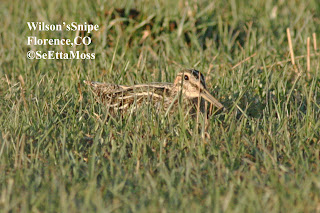American Avocet-no identification problem with these birds

This American Avocet was the highlight of my visit to Lake Cheraw which is northeast of La Junta. Though the wind had been gusting all afternoon, it became even stronger when I got to Lake Cheraw and the waves were pushing over the shore on the north side of the lake where much of the visible shorebird habitat is located. The waves didn't stop this American Avocet from foraging and it was successful a number of times while I watched including in the bottom pic. I was surprised to see 3 Black-crowned Night Herons that were taking shelter by the wetland area where a flock of White-faced Ibis were sheltering. Other birds included Black-necked Stilts, aechmophorus grebes, Eared and Horned Grebes (in high breeding colors), and waterfowl including Ruddy Ducks. SeEtta






